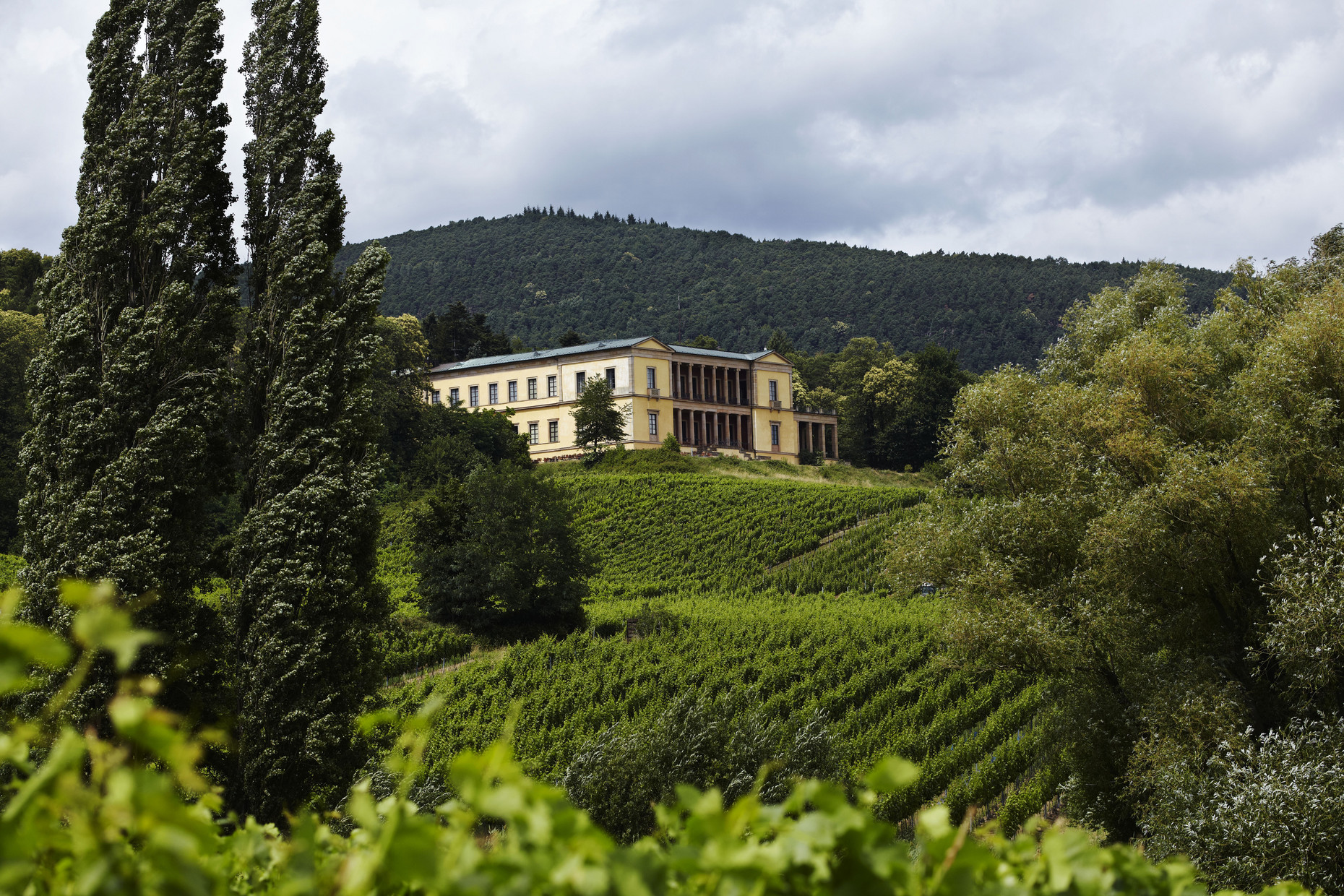Welcome to Villa Ludwigshöhe Castle
“An Italian style villa for the summer season only, set in the mildest part of the kingdom”, this was the wish of King Ludwig I of Bavaria (1786–1868) which became a reality in the form of Villa Ludwigshöhe Castle near Edenkoben.
The classic-style villa is reminiscent of the ancient buildings from which it drew inspiration, and features delightful wooden floors, intricate ceiling and wall paintings and a unique view over the Palatinate and the Upper Rhine Plain.
Further information and current opening hours can be found here
Contact
Schloss Villa Ludwigshöhe
Villastraße 64
67480 Edenkoben
Phone +49 261 6675 4820
villa-ludwigshoehe(at)gdke.rlp.de
Villa Ludwigshöhe is a historical site of the Generaldirektion Kulturelles Erbe Rheinland-Pfalz (General Directorate for Cultural Heritage Rhineland‑Palatinate), www.gdke.rlp.de
With the audio guide, you can now visit the historic rooms of Villa Ludwigshöhe at your own pace and according to your own interests. At many stops, you will receive exciting and interesting information about the palace, its furnishings, the builder and his time as well as its subsequent uses.
The guide is available in three languages - German, English and French - and can be borrowed for €1.00 per device on presentation of an identity document.
The villa was built between 1846 and 1852 according to plans by the royal court architect Friedrich von Gärtner. In July 1852, the meanwhile abdicated king and his wife, Therese, travelled here for the first time for a six-week summer retreat and visited the villa every other summer until his death in 1868.
The complex consisted of three buildings:the main “Königsbau“ structure, situated on the highest point below the ruins of Rietburg Castle, the slightly lower “Cavalierbau“, also known as the “Prinzenbau“, for staff and court, and the stables with sheds and stables. The main building, the Königsbau, consists of four wings that enclose a shaded inner courtyard as a closed rectangle.The front side facing the Rhine Valley is characterised by the two-storey loggia with Doric and Ionic columns placed one above another and a double flight of steps. A laterally attached hall with a pergola, which was originally overgrown with vines, breaks up the strict structure.
The surprisingly Mediterranean feel of the exterior architecture is continued inside with skilfully assembled exotic wood floors and precious wall and ceiling paintings. The painted ceilings date back to Ludwig‘s time. Some of the wall paintings, on the other hand – which combine motifs modelled on Pompeii with those from the Palatinate region – were not created until 1899 under Prince Regent Luitpold.
As a “high-tech product“ of the 19th century, the kitchen deserves special mention. It has been preserved almost unchanged as a closed, uniform ensemble of rooms.
The state of Rhineland-Palatinate acquired the villa in 1975 from the Wittelsbach Equalisation Fund. From 2019 to 2025, the most extensive refurbishment measures to date took place, affecting the entire building.
Südliche Weinstraße Edenkoben e.V.
Tourismusbüro
Poststraße 23
67480 Edenkoben
Phone +49 6323 985-9110
touristinfo(at)garten-eden-pfalz.de
www.garten-eden-pfalz.de
